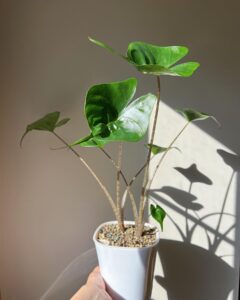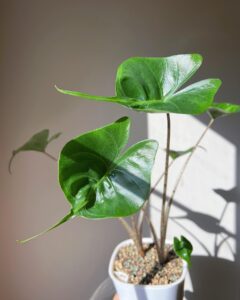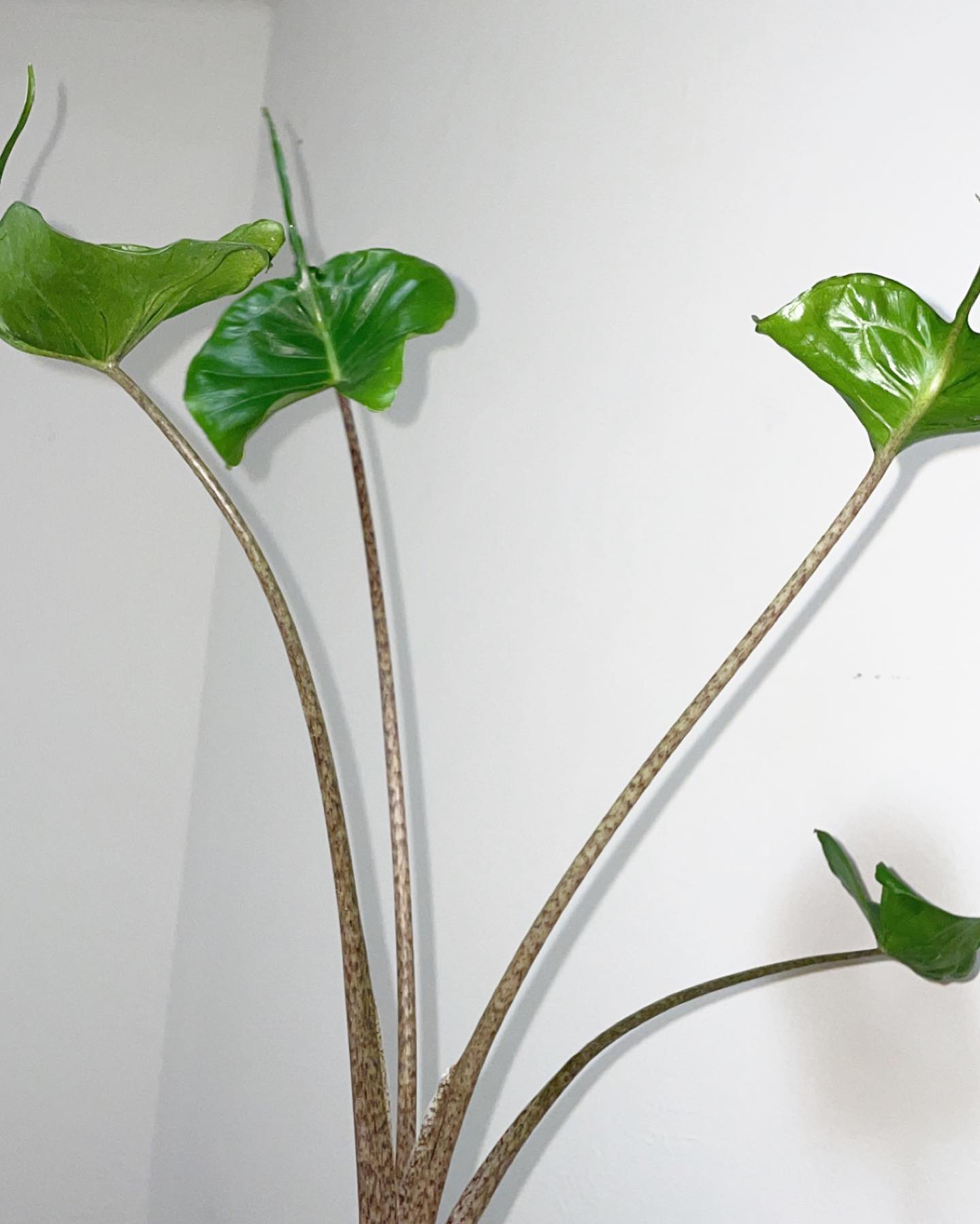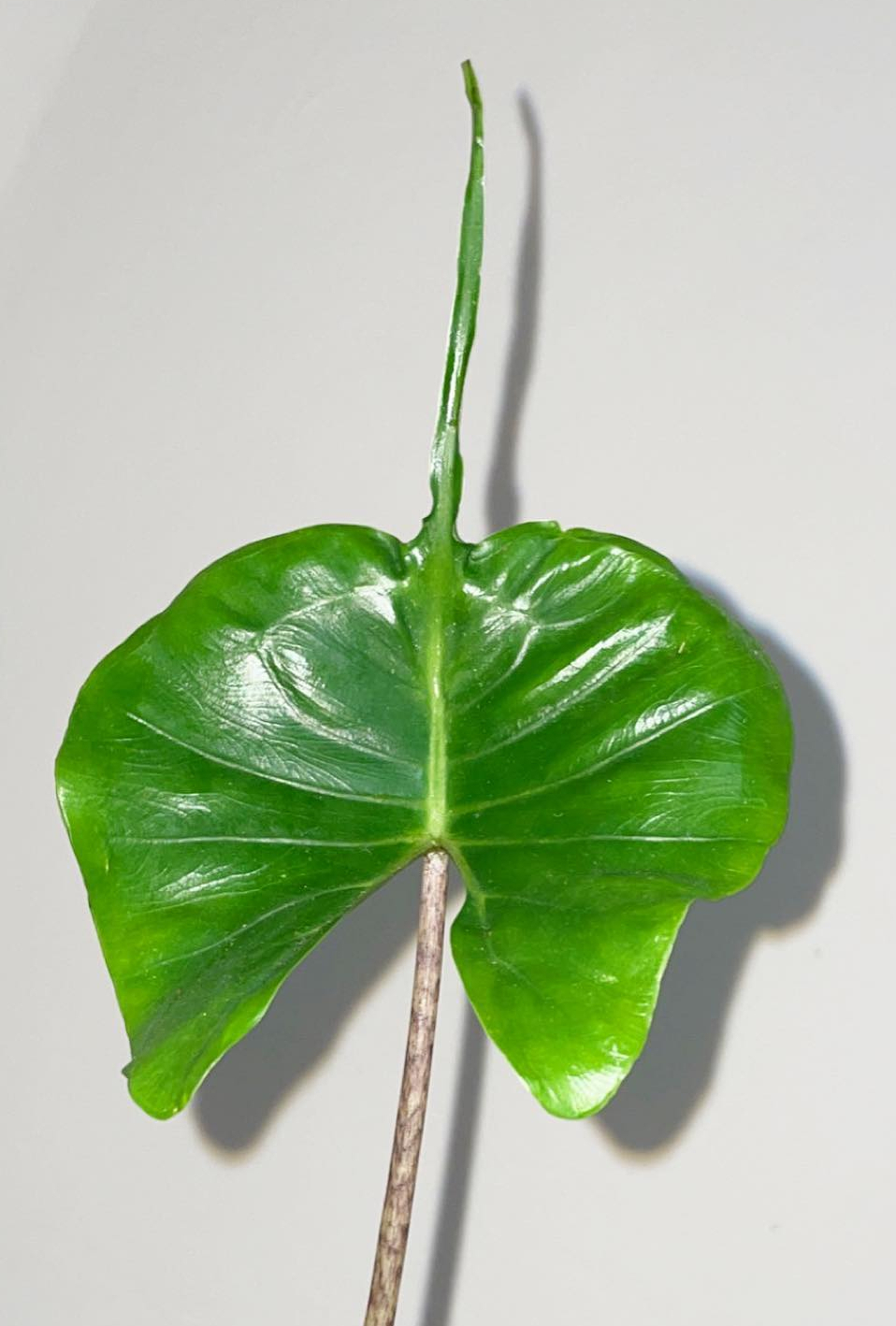Basic Information
Welcome to our guide on the Alocasia Stingray – a houseplant that adds a tropical flair to any space. We’ll cover the essentials of caring for this plant, from lighting to watering, to ensure it thrives and transforms your home into a lush haven.



Light
The Alocasia Stingray flourishes in bright, indirect sunlight. Ideal placement includes east or west-facing windows, where it can enjoy gentle morning or late afternoon sun. Direct sunlight should be avoided, as it can scorch the leaves. If your space lacks natural light, consider supplementing it with artificial light sources. Remember, adequate lighting is crucial for maintaining the plant’s vibrant foliage.
Water
Watering your Alocasia Stingray correctly is vital. The soil should be consistently moist but not waterlogged. Water the plant when the top two inches of soil feel dry to the touch, usually once or twice a week. Reduce watering in winter, and always use room-temperature water to avoid shocking the plant’s roots. Good drainage is key to preventing root rot.
Tip: Regularly wipe leaves with a damp cloth for dust removal and efficient photosynthesis.
Soil
A well-draining, slightly acidic soil mix is perfect for the Alocasia Stingray. Combine equal parts of potting soil, perlite or coarse sand, and peat for an ideal mixture. This blend ensures proper moisture retention and aeration, fostering healthy root development. Regularly check the soil’s pH, aiming for a range between 5.5 and 6.5.
Temperature
Alocasia Stingray prefers warm environments, with an ideal temperature range between 65°F and 75°F (18°C to 24°C). Avoid exposure to cold drafts or temperatures below 50°F (10°C), as it can cause harm. Maintain a stable temperature to ensure your plant’s health and vigor.
Humidity
High humidity is a must for the Alocasia Stingray, reflecting its tropical origins. Aim for humidity levels between 40% to 70%. You can increase humidity around the plant using a humidifier, misting regularly, or placing it on a pebble tray. Be cautious of over-misting, as persistent wetness can lead to leaf diseases.
Tip: Keep the plant away from drafty areas and air vents to maintain a consistent temperature.
Fertilizer
Fertilize your Alocasia Stingray every two weeks during the growing season (spring and summer) with a diluted balanced liquid fertilizer. In winter, reduce feeding to once a month or stop altogether. Ensure the soil is moist before fertilizing to prevent root burn.
Growth Rate
The Alocasia Stingray showcases a moderate to fast growth rate in ideal conditions. It can reach a notable size with proper care, making a dramatic statement in your interior space. Its unique leaf shape and growth pattern add an exotic touch, making it a standout plant in any collection.
Pet Safety
Alocasia Stingray is toxic if ingested by humans or pets. Its leaves contain calcium oxalate crystals that cause irritation. Keep it out of reach of children and pets.
Grow in Semi-Hydro
- Alocasia plants excel in Semi-hydroponics (LECA/Pon) due to their natural inclination for root growth and humidity.
- Successfully transitioning Alocasia to Semi-hydroponics is enhanced with a Nutrient Stagnant Wicking (NSW) setup.
- Alocasia roots adapt seamlessly to the water in LECA/Pon, with quick resolution of any root hair issues in NSW setups.
- Fertilizer includes a nutrient mix concentration of approximately 800-1000ppm.
- These plants are versatile in different temperature and humidity settings, thriving in controlled environments.
- Long-term care involves maintaining a constant water reservoir and performing occasional system flushes for sustained growth.
Tips
- Ensure the plant is not exposed to direct sunlight to prevent leaf burn.
- Water only when the topsoil is dry to maintain proper moisture levels.
- Use a well-draining soil mix to prevent root rot.
- Keep the plant in a warm and stable environment.
- Increase humidity around the plant, especially in drier conditions.
- Fertilize regularly during the growing season for optimal growth.
- Monitor for pests and diseases and treat them promptly.
- Prune yellow or damaged leaves to maintain plant health.
- Be mindful of the plant’s toxicity to pets and children.
Care for your Alocasia Stingray with these guidelines to keep it thriving. Enjoy the tropical ambiance it brings to your home with its stunning, lush greenery.
Happy planting! 🌱


